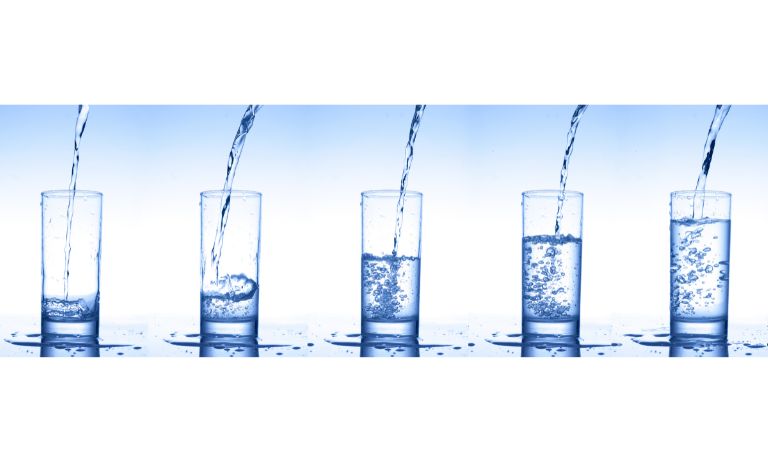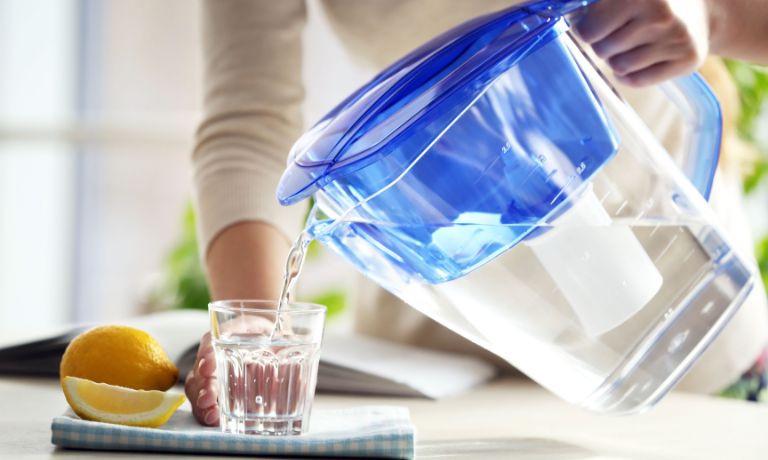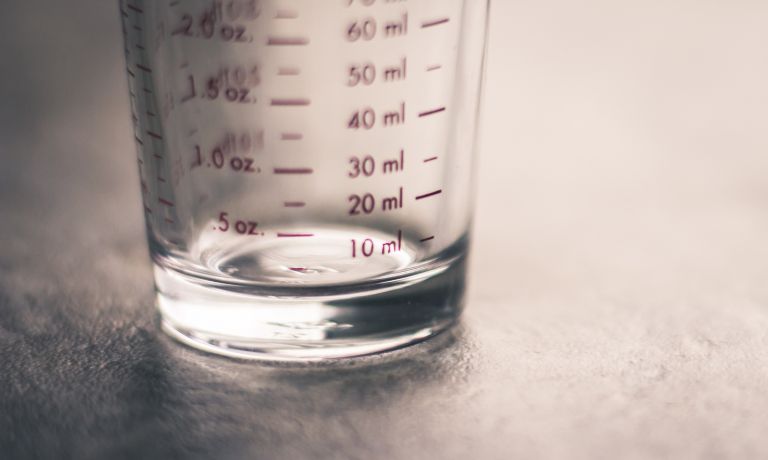If you’ve ever been in the grocery store or out for dinner and come across a recipe that calls for 2 liters of an ingredient but needs to figure out How Many Ounces Is 2 Liters, this blog post is perfect for you. Converting between units of measurement can be tricky and confusing; however, it doesn’t have to be.
Today we’ll break down the process step-by-step so that converting from liters to ounces (or vice versa) will become second nature. After reading today’s post – you’ll never again be left wondering: how many ounces is 2 liters?
Definition Of The Liters Measurement Unit
The liter (symbol: L) is a unit of volume in the International System of Units (SI), most commonly used to measure capacity.
A liter equals one cubic decimeter (1 L = 1 dm3). It is a non-SI unit accepted for use with the SI, equal to one cubic decimeter’s volume. The liter is an essential part of the metric system, which is used in most parts of the world, and it is a unit recognized by all major international systems of measurement.
The liter can measure the capacity for liquid and solid materials, such as fuel or grain. Many countries use liters to measure fuel consumption, particularly in automobiles. In the United States, liters are also used to measure certain volumes of food products, such as milk and soft drinks.
Definition Of The Ounces Measurement Unit
The Ounces measurement unit is a unit of mass and weight commonly used in the United States but also in some other countries.
One ounce is equivalent to 28.35 grams or 0.911457 kilograms. It is equivalent to 16 drams or 437.5 grains (an archaic measure).
The abbreviation for ounces is oz. Ounces are typically used to measure the weight of various items, from food ingredients to precious metals and gems. In most cases, the measured item is converted into ounces before being weighed or estimated in terms of volume.
In the U.S., ounces are also commonly used for liquid measurements such as milk or soda. For example, a 12-ounce can of soda will contain 12 ounces of liquid per serving. In the U.K., however, liquid measurement is typically done in milliliters.

Measuring glass
Why Should You Know How Many Ounces Is 2 Liters?
As a responsible citizen, there are certain things that you should know for your good. One of those things is the conversion from liters to ounces. Knowing How Many Ounces Is 2 Liters can be useful in various situations.
For instance, if you are traveling abroad and need to purchase bottled water, you may need to become more familiar with the metric system used in that country. Knowing How Many Ounces In 2 L, you can easily calculate how many bottles you need to get through your trip.
Understanding these kinds of conversions can help you maintain a healthier lifestyle. By knowing how much liquid you consume, you can keep track of your water intake and ensure that you meet your daily hydration needs.
How Many Ounces Is 2 Liters?
Two liters is equivalent to 67.63 fluid ounces. Understanding the equivalent conversion rate can be crucial for a recipe or even a science experiment. Knowing this, you can confidently measure the correct amount and achieve the desired outcome.
How Many Ounces Is 2 Liters Of Water?
For those wondering How Many Ounces In 2 L of water, the answer is roughly 67.6 ounces. While this may seem like a lot, it’s important to remember that proper hydration is crucial for maintaining overall health and well-being. So, the next time you’re reaching for a drink, consider grabbing a glass of water and reaching for that 2-liter bottle for easy measuring.
How Many Ounces Is 2 Liters Of Wine?
How Many Oz In 2 Liters of Wine? 2 liters of wine equals approximately 67.6 ounces. This means that 2 liters of wine are roughly equivalent to two and a half standard 750 ml bottles containing 25.4 ounces.
How Should You Convert 2 Liters Into Ounces?
To convert 2 liters into ounces, you will need to know that 1 liter is equal to 33.814 ounces. To calculate this conversion, simply multiply 33.814 by the number of liters (2) you wish to convert:
33.814 x 2 = 67.628 ounces. Therefore, 2 liters is equal to 67.628 ounces.
You can use an online converter if you need a more precise conversion. Simply enter the number of liters you wish to convert and select the unit of measurement (liters) and press enter – the result will be displayed in the output unit of measurement (ounces).
It is important to note that the conversion from liters to ounces is not exact, as there are slight variations depending on temperature and pressure. It’s also important to ensure you use the correct units of measurement when making calculations, as this can affect the accuracy of your results.

Measuring water level
How Should You Convert Between Ounces And Liters?
Converting between ounces and liters requires a basic understanding of the metric system. One liter equals 33.814 fluid ounces, so to convert from liters to ounces you multiply by 33.814.
To convert from ounces to liters, divide by 33.814. For example, if you wanted to convert 5 liters to ounces, you would multiply 5 by 33.814, resulting in 169.07 fluid ounces.
Similarly, if you wanted to convert 20 fluid ounces to liters, you would divide 20 by 33.814, which equals 0.595 liters. Converting between ounces and liters can be done quickly using a calculator or chart. Additionally, many online conversion tools are available to do the math for you.
Conversion Chart For Ounces And Liters
1 ounce = 0.0295735 liters
2 ounces = 0.059147 liters
3 ounces = 0.088721 liters
4 ounces = 0.118295 liters
5 ounces = 0.147869 liters
6 ounces = 0.177444 liters
7 ounces = 0.207018 liters
8 ounces = 0.236592 liters
9 ounces = 0.266166 liters
10 ounces = 0.29574 liters
1 liter = 33.814 ounces
2 liters = 67.628 ounces
3 liters = 101.442 ounces
4 liters = 135.256 ounces
5 liters = 169.07 ounces
6 liters = 202.884 ounces
7 liters = 236.698 ounces
8 liters = 270.512 ounces
9 liters = 304.326 ounces
10 liters = 338.14 ounces
How Should You Measure Dry Ingredients In Ounces And Liters?
When measuring dry ingredients in ounces and liters, it’s important to use a kitchen scale to measure each ingredient’s weight accurately. Measuring cups can also be used, but they are not as accurate since they don’t consider differences in density between different ingredients.
Ounces should be the primary measurement for measuring dry ingredients since ounces measure both weight and volume. A kitchen scale should be able to display both ounces and grams so that you can easily convert between the two.
As for liters, it’s best to use a measuring cup designed specifically for measuring liquids in liters. These cups are typically calibrated to measure liquid in milliliters, and then you can convert from milliliters to liters as needed.
No matter what measurement you use for your dry ingredients, always double-check the accuracy of each measurement before adding it to your recipe. Accurate measurements are key for getting consistent results with any recipe!
Remember, ounces are the best way to measure dry ingredients, but liters can also be used in a pinch. Just ensure you have the right tools and follow these tips so your recipes turn out perfectly every time.

Measuring cup with scale
How Should You Measure Liquids In Ounces And Liters?
When it comes to measuring liquids, ounces and liters are the common units of measurement used. To measure in ounces (oz), you will need a graduated cylinder or a measuring cup, both of which should be marked with ounces.
When using a graduated cylinder, simply fill it with the liquid that needs to be measured and read the number of ounces it holds. When using a measuring cup, you will need to fill the cup up to the desired amount and then read the measurement on the side of the cup.
Regarding liters (L), you will need a larger graduated cylinder or a pitcher to measure accurately. A liter is slightly bigger than an ounce, so you must fill the cylinder or pitcher up more for an accurate measurement. Again, read the measurement on the side of the instrument, and that will be your liter measurement.
Differences Between Fluid Ounces And Dry Ounces
The most crucial difference between fluid and dry ounces is that one measures liquids, and the other measures solids or semi-solids.
A fluid ounce (fl oz) is a unit of volume used to measure the amount of liquid in a container, while a dry ounce (oz) is a unit of weight used to measure the mass of an object.
When measuring liquids, one fluid ounce equals about 29.6 milliliters (ml). However, when measuring the weight of an object, one dry ounce equals 28.35 grams (g). Therefore, a dry ounce measures nearly 4% more than a fluid ounce.
Regarding cooking measurements, one fluid ounce is typically equal to two tablespoons (or two measuring spoons), while one dry ounce is equal to about three tablespoons.

Water pitcher
Common Mistakes To Avoid About Converting Between Ounces And Liters
In this section, we’ll go over the common mistakes often made when converting between ounces and liters. So if you need help mastering ounces and liters conversions keep reading – we’ll have everything explained to you in no time!
- Accidentally using different units of measurement. Ensure you use the same unit for both sides of your conversion equation. For example, if you are converting from ounces to liters, ensure you are working with ‘ounces’ on one side and ‘liters’ on the other.
- Not using the correct conversion factor when converting from one unit to another. Use the correct conversion factor when converting from ounces to liters or vice versa. For example, there are 33.814 ounces in one liter, so if you convert from ounces to liters you must multiply by 33.814 rather than dividing.
- Not understanding the difference between US Customary and Imperial units of measurement. Ensure you know which type of conversion you are doing, as US customary and imperial units have different values. For example, a quart equals 32 ounces in US customary units but 40 ounces in imperial units.
- Forgetting to include the decimal points when converting from one measurement unit to another. Make sure to add any decimal points that may be required when making your conversion. For example, if you are converting from ounces to liters and have a number with no decimals, such as 16 ounces, remember to add two decimal points and ensure the answer is 0.46 liters instead of 46 liters.
- Not using your calculator correctly when calculating conversions. Always double-check your answers with a calculator, and make sure you know how to use it correctly. If you are using a calculator to convert ounces to liters, ensure you’ve set it in the correct mode and selected the right conversion factor.
FAQs
How Many 8-Ounce Cups Are Equal To 2 Liters?
There are about 8.5 8-ounce cups equal to 2 liters. To convert liters to 8-ounce cups, remember that there are 67.6 fluid ounces in 2 liters. Divide 67.6 by 8 to get about 8.5. So, 2 liters equals 8.5 8-ounce cups.
Are 20 Ounces Equal To 2 Liters?
No, 20 ounces is not equal to 2 liters. There are 33.814 fluid ounces in a liter, so 2 liters would be 67.628 fluid ounces. Therefore, 20 ounces is not the same as 2 liters.
How Many 16-Ounce Bottles Are Equal To 2 Liter Of Water?
2 liters is equal to approximately 67.6 fluid ounces. Therefore, 2 liters would be equal to four 16-ounce bottles of water.
How Many Ounces Are Equal To A Liter?
A liter equals 33.814 fluid ounces, so 1 liter is the same as 33.814 fluid ounces.
Are 64 Ounces Equal To 2 Liters?
No, 64 ounces is not equal to 2 liters. There are 33.814 fluid ounces in a liter, so 2 liters would be 67.628 fluid ounces. Therefore, 64 ounces is not the same as 2 liters.
How Many 8-Ounces Are There In A Liter?
There are 4.2267528377 cups in a liter, so there are approximately 33.814 fluid ounces in a liter. This means that 8-ounces is equal to about 0.236 liters.
How Many 12-Ounce Cans Are There In 2 Liters?
There are 16 12-ounce cans in 2 liters. Since there are 33.814 fluid ounces in a liter, 2 liters equals 67.628 fluid ounces. Thus, 16 12-ounce cans would equal 67.628 fluid ounces or 2 liters.
How Many 20-Ounce Bottles Are Equal To 2 Liters?
3.4 20-ounce bottles are equal to 2 liters. Since there are 33.814 fluid ounces in a liter, 2 liters equals 67.628 fluid ounces. Thus, 3.4 20-ounce bottles would equal 67.628 fluid ounces or 2 liters.
How Many Ounces Are Equal To Half A Liter?
Half a liter is equal to 16.907 ounces. This means that 1 liter is equal to 33.814 ounces. The conversion factor for liters to ounces can also be calculated by dividing the number of liters (2) by 0.0295735. Using this conversion, two liters are equal to 58.34 ounces.
How Many Ounces Of Water Does A 1.5-Liter Bottle Contain?
A 1.5-liter bottle contains 50.71 ounces of water or liquid. This is calculated by multiplying the number of liters (1.5) by 33.814, the conversion factor for liters to ounces.
How Many Liters Of Water Does A 16-Ounce Bottle Contain?
A 16-ounce bottle contains 0.473 liters of water or liquid. This is calculated by dividing the number of ounces (16) by 33.814, the conversion factor for ounces to liters.
Conclusion: How Many Ounces Is 2 Liters?
Now you should know How Many Ounces Is 2 Liters. To conclude, 2 liters is equivalent to 67.6 ounces. This can be useful when converting measurements from metric to US customary units or vice versa.
It is important to remember that 1 liter equals 33.8 fluid ounces and that the conversion rate between liters and ounces will remain the same regardless of what type of liquid you are measuring. Understanding the conversion process between liters and ounces will ensure you get the correct measurements every time!


